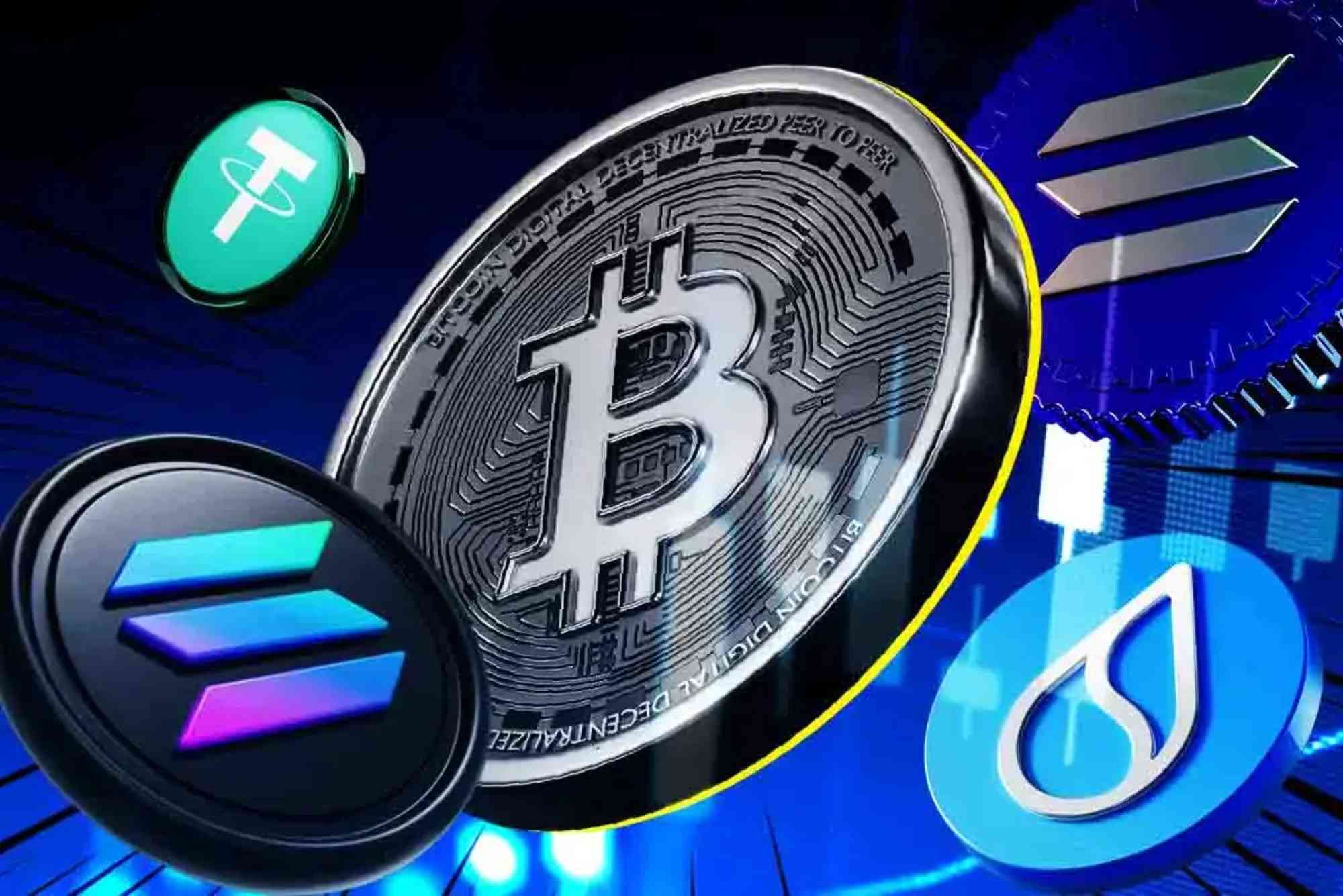Crypto Market Trends Every Investor Should Watch
The crypto market continues to evolve at a rapid pace, attracting investors from all over the world. Whether you are a seasoned trader or a newcomer, keeping up with market trends is essential to making informed investment decisions. The digital asset space is no longer just about Bitcoin and Ethereum. It has grown into a global ecosystem that includes decentralized finance, stablecoins, NFTs, and blockchain-based applications that influence both technology and finance. Understanding the current and upcoming trends in the crypto market can help investors position themselves wisely and avoid costly mistakes.
The Growing Influence of Bitcoin
Bitcoin remains the foundation of the crypto market and is often called digital gold. Its role as a store of value continues to strengthen, particularly as global inflation and economic uncertainties drive investors toward alternative assets. Despite volatility, Bitcoin has demonstrated resilience and maintains dominance over other cryptocurrencies. Institutional adoption is also fueling Bitcoin’s credibility, with more financial institutions offering Bitcoin ETFs and custodial services. For investors, Bitcoin’s price movements often set the tone for the broader crypto market, making it crucial to monitor closely.
Institutional Investment in Bitcoin
In recent years, institutional investment has transformed the crypto landscape. Hedge funds, pension funds, and publicly traded companies are now allocating a portion of their portfolios to Bitcoin. This legitimizes the asset and reduces the perception that it is a speculative instrument. With regulatory clarity improving in several regions, institutions are more willing to participate, adding liquidity and stability to the crypto market.
Bitcoin’s Role as Digital Gold
The narrative of Bitcoin as a hedge against inflation continues to attract investors. Its limited supply of 21 million coins ensures scarcity, much like gold. As fiat currencies face inflationary pressures, Bitcoin’s appeal as a decentralized and finite asset becomes stronger. Investors who believe in long-term value preservation often see Bitcoin as a core holding.
Ethereum and the Rise of Smart Contracts
While Bitcoin dominates in value, Ethereum leads in innovation. Ethereum’s blockchain enables smart contracts, which power decentralized applications across industries. The Ethereum upgrade to proof-of-stake has improved energy efficiency and scalability, addressing major concerns about sustainability. Investors should pay attention to Ethereum because it underpins much of the crypto ecosystem, including DeFi and NFTs.
The DeFi Revolution
Decentralized finance, or DeFi, is transforming how people borrow, lend, and trade assets. By removing intermediaries, DeFi platforms offer faster, cheaper, and more transparent financial services. The total value locked in DeFi protocols continues to grow, signaling increased adoption. However, risks such as smart contract vulnerabilities and regulatory challenges remain. For investors, DeFi presents both opportunities and risks that must be carefully managed.
Ethereum’s Competitors
Ethereum faces competition from other smart contract platforms such as Solana, Cardano, and Avalanche. These networks aim to offer faster transaction speeds and lower fees. Investors should monitor whether these competitors gain significant adoption or if Ethereum maintains its dominance. The future may include a multi-chain ecosystem where several blockchains coexist and interact.
Stablecoins and Their Expanding Role
Stablecoins are cryptocurrencies pegged to stable assets like the US dollar. They serve as a bridge between traditional finance and the crypto market. Tether and USD Coin are the most widely used, offering liquidity and reducing volatility for traders. Their use in cross-border payments and DeFi platforms highlights their importance.
Regulators are paying close attention to stablecoins due to concerns about financial stability. New policies may impact how they operate, but their role in the crypto economy is unlikely to diminish. For investors, stablecoins can be a safe harbor during market volatility while still enabling participation in crypto markets.
NFTs and Digital Ownership
Non-fungible tokens (NFTs) took the world by storm by enabling digital ownership of art, music, and virtual assets. While the hype has cooled, the underlying concept of digital ownership remains powerful. Gaming, fashion, and real estate are exploring NFT use cases that could expand adoption. Investors should watch for projects that provide real utility beyond digital collectibles. NFTs tied to gaming or intellectual property rights may have more sustainable value than speculative art pieces.
Regulation and Government Involvement
Regulation is one of the most significant factors shaping the crypto market. Governments are working to establish frameworks that balance innovation with consumer protection. The European Union’s MiCA regulation and discussions in the US about stablecoin oversight are notable developments. While stricter regulations may limit certain activities, they also provide clarity and encourage institutional participation. Investors must stay updated on regulatory changes, as they can have immediate effects on market sentiment and prices.
The Rise of Central Bank Digital Currencies (CBDCs)
Several central banks are exploring or piloting their own digital currencies. CBDCs aim to combine the efficiency of digital payments with the stability of traditional currencies. While they are not cryptocurrencies in the traditional sense, their development will impact the crypto market. CBDCs may coexist with decentralized assets, but they could also challenge stablecoins by offering regulated alternatives. Investors should track CBDC progress as it may influence adoption and the role of private cryptocurrencies.
Security and Technological Advancements
Security remains a critical issue in the crypto market. High-profile hacks and scams have caused significant losses. As the industry matures, improved security practices and technologies are being developed. Multi-signature wallets, decentralized insurance, and enhanced auditing tools are gaining traction. Investors must prioritize security when selecting platforms and storing assets.
The Importance of Layer-2 Solutions
Scaling remains a challenge for many blockchains. Layer-2 solutions, such as the Lightning Network for Bitcoin and rollups for Ethereum, are designed to improve transaction speed and reduce costs. These solutions are crucial for mainstream adoption, especially for payments and decentralized applications. Investors should monitor which projects successfully implement scalable solutions, as they will likely attract more users.
Environmental Concerns and Sustainability
Cryptocurrency mining has been criticized for its environmental impact. The shift of Ethereum to proof-of-stake significantly reduced energy consumption. Bitcoin mining remains energy-intensive, but miners are increasingly using renewable energy sources. Sustainable mining practices are becoming more important for investor sentiment and regulatory approval. As environmental, social, and governance (ESG) considerations grow, projects that prioritize sustainability may attract greater investment.
Global Adoption and Mainstream Integration
The adoption of crypto is expanding globally. Countries in Asia, Africa, and Latin America are embracing digital assets for remittances and financial inclusion. Major corporations are integrating crypto payments and blockchain solutions into their businesses. From fintech apps to online retailers, the acceptance of digital assets continues to rise. This growing mainstream integration will play a key role in the future growth of the crypto market.
Market Volatility and Risk Management
Volatility is both a risk and an opportunity in the crypto market. Prices can swing dramatically in short periods, creating chances for profit but also for significant losses. Successful investors manage risk through diversification, research, and disciplined strategies. Understanding market cycles and being prepared for downturns is as important as capitalizing on bull runs.
Future Outlook for the Crypto Market
The crypto market shows no signs of slowing down. Innovations in blockchain technology, increasing institutional interest, and wider adoption suggest that digital assets are becoming a permanent fixture in the financial world. While challenges such as regulation and security remain, the potential rewards continue to attract investors. Keeping an eye on emerging trends and adapting to changes will be key to long-term success.
The crypto market is dynamic, complex, and filled with opportunities. From Bitcoin’s role as digital gold to Ethereum’s smart contracts and the rise of stablecoins and NFTs, multiple trends are shaping the future. Regulation, sustainability, and global adoption will further influence the market. Investors who stay informed, manage risk wisely, and adapt to changes will be best positioned to benefit. Now is the time to deepen your understanding, explore innovative projects, and consider how crypto fits into your portfolio. Staying ahead of trends in the crypto market could be the key to unlocking future growth and financial success.
Frequently Asked Questions
What is the crypto market and how does it work?
The crypto market is a global network where digital currencies are traded. It operates 24/7 and is decentralized, meaning no single authority controls it.
Is investing in the crypto market safe?
Investing carries risks due to volatility and regulatory uncertainty. Proper research, diversification, and security measures can reduce risks.
What factors affect the crypto market?
Factors include Bitcoin’s price movements, regulations, technological advancements, adoption rates, and global economic conditions.
Will cryptocurrencies replace traditional money?
While unlikely to fully replace fiat currencies, cryptocurrencies and CBDCs may coexist, offering more options for payments and investments.
Which cryptocurrencies should investors watch in 2025?
Bitcoin and Ethereum remain the most important, but investors should also monitor promising altcoins, DeFi projects, and emerging blockchain networks.




